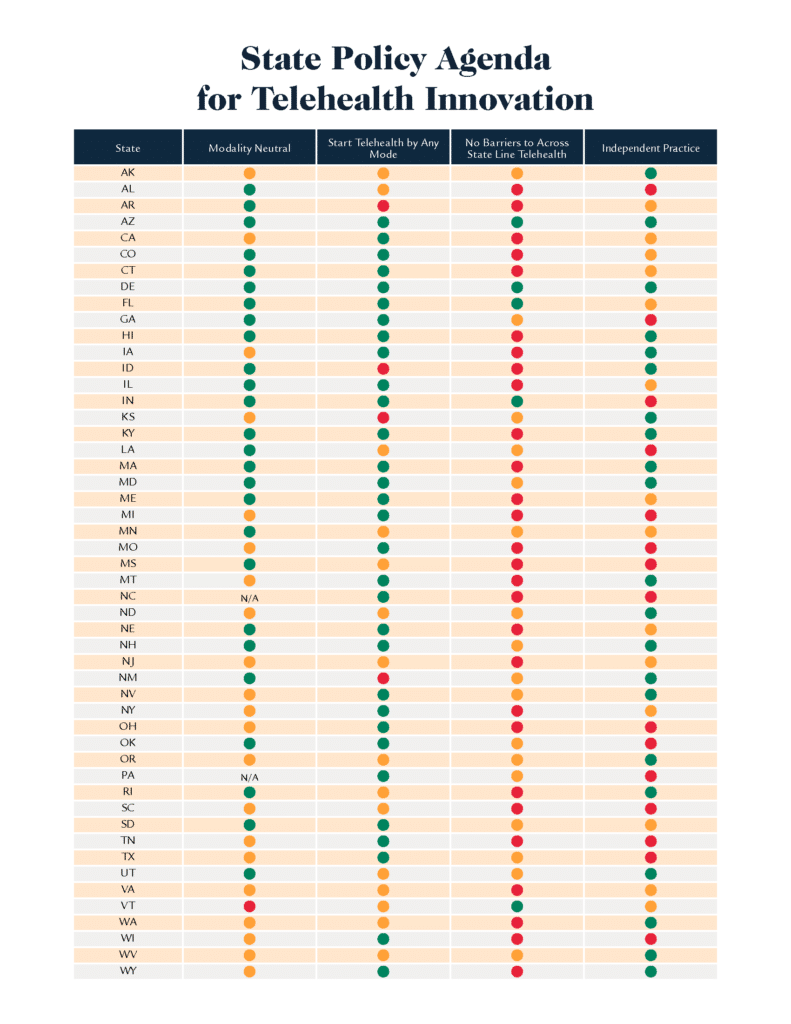The COVID-19 pandemic disrupted the status quo in healthcare. As we recover, lawmakers now have an opportunity to learn from our mistakes and triumphs to chart a new course. Among the most notable changes in care delivery brought about by the pandemic is the rise of telehealth. Yet as we update this report to reflect actions taken in 2022, it is hard not to notice that states have shown a surprising lack of urgency in making comprehensive updates to their telehealth laws.
While telehealth services were available long before the pandemic, millions of Americans used telehealth for the first time over the past three years. The rapid adoption of telehealth technology was enabled by emergency regulatory reforms undertaken at the federal and state levels. For example, federal officials made select changes to the Medicare program, and governors in nearly all 50 states advanced access with flexible provider licensure for new telehealth uses by executive order.
However, most of the emergency actions taken early on in the pandemic were only temporary. When state public health emergency declarations ended, and executive orders were withdrawn, many of the new flexibilities were lost. While some states recognized the benefits of regulatory flexibility and have adopted permanent reforms, a surprising number have only made minor tweaks to their laws, and most only benefit one kind of service or provider.
States must continue to refocus their efforts to ensure clear laws and guidelines are in place for innovation to emerge so that patients and providers can benefit from this helpful tool in any care delivery toolbox. Immediate action will be needed to avoid disrupting patient access to providers they gained during COVID, as other options may not exist in their community. For many patients, cutting off remote access to care is the difference between them receiving care in this manner versus no care at all.
There are four key areas where states have an opportunity to unleash innovation and embrace the potential of telehealth for expanding patient access to high-quality care:
- Patients Can Access all Forms of Telehealth: State laws and regulations should define telehealth in broad terms that do not favor one mode of telehealth over others or preclude future innovation in care delivery. This is called modality neutrality.
- Patients Can Start a Telehealth Relationship by Any Mode: State laws and regulations should not prohibit patients from initiating a relationship with a telehealth provider via their preferred modality.
- Patients Face No Barriers to Across-State Line Telehealth: State laws and regulations should not prevent patients from accessing virtual care from providers licensed in other states.
- Patients Can See Many Kinds of Providers Over Telehealth: State laws and regulations should allow providers to practice at the top of their license to take the next step toward a more quality-oriented, affordable, and innovative health system.
This report examines all 50 states in these four key areas.

This report does not cover all telehealth-related policy changes in 2022. For example, it ignores actions taken in states to expand or adopt compacts. Many of these smaller changes are not highlighted because they have severe limits, or only tweak around the edges.
By contrast, adopting this state policy agenda for telehealth innovation would remove deleterious barriers that have historically discriminated against those in certain geographies, such as rural communities or underserved urban areas.

